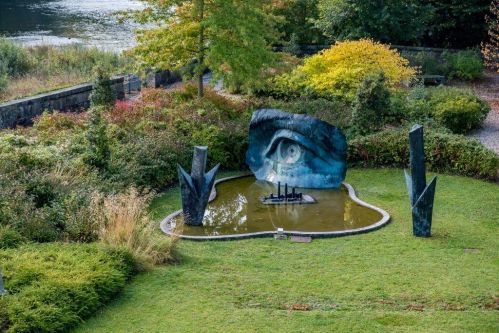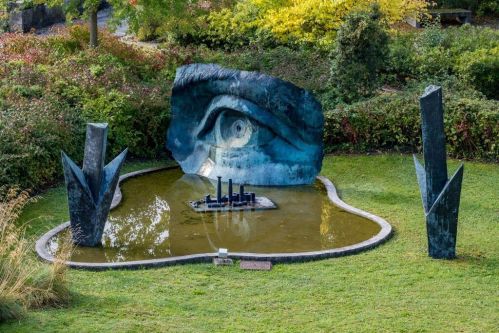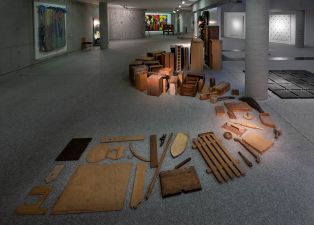- Découvrez les collections
- Notice d'oeuvre





Aller plus loin :
POIRIER Anne : Marseille, 1942 ;
POIRIER Patrick : Nantes, 1942 ;
POIRIER Patrick : Nantes, 1942 ;
1983
H. 275 cm ; l. 472 cm ; P. 50 cm ; Pds. 700 ; Vol. 6,49 (visage) ; H. 340 cm ; P. 50 cm ; Pds. 120 (flèche la plus grande) ; H. 265 cm ; P. 50 cm ; Pds. 100 (flèche la plus petite) ; L. 150 cm ; H. 100 cm ; l. 100 cm ; Vol. 1,5 (temple)
M0536_D.1989.3.1
Dès 1967, Anne et Patrick Poirier décident de travailler ensemble. Abandonnant leur travail respectif, ils réunissent leurs idées, leurs sensibilités, et leurs travaux signés en commun deviennent les fruits de ce partage. Ce ne sont plus des artistes solitaires travaillant dans leur atelier en quête d’un langage personnel, mais des voyageurs, arpenteurs de sites, découvreurs de civilisations, de religions et de cultures différentes. Enfants de la guerre, Anne et Patrick Poirier dénoncent la fragilité des civilisations et des cultures, et leur
esthétique est souvent celle du fragment, de la ruine, de la catastrophe, comme ici cette évocation du géant Mimas vaincu par Zeus symbolisé par ses flèches.
esthétique est souvent celle du fragment, de la ruine, de la catastrophe, comme ici cette évocation du géant Mimas vaincu par Zeus symbolisé par ses flèches.
Anne and Patrick Poirier decided to work together from 1967 onwards. Abandoning their respective work, they combined their ideas and sensitivities, and the artworks that they signed jointly became the fruit of this sharing. They were no longer solo artists
working in their workshop in search of a language of their own, but travellers, surveyors and discoverers of different civilisations and religions. As war children, Anne and Patrick Poirier criticise the fragility of civilisations and cultures, and their aesthetics are often based on fragmentation, ruin and catastrophe, as in this portrayal of the giant Mimas defeated by Zeus, who is symbolised by his arrows.
working in their workshop in search of a language of their own, but travellers, surveyors and discoverers of different civilisations and religions. As war children, Anne and Patrick Poirier criticise the fragility of civilisations and cultures, and their aesthetics are often based on fragmentation, ruin and catastrophe, as in this portrayal of the giant Mimas defeated by Zeus, who is symbolised by his arrows.



 Copyright© WebMuseo 2017 - 2025
Copyright© WebMuseo 2017 - 2025